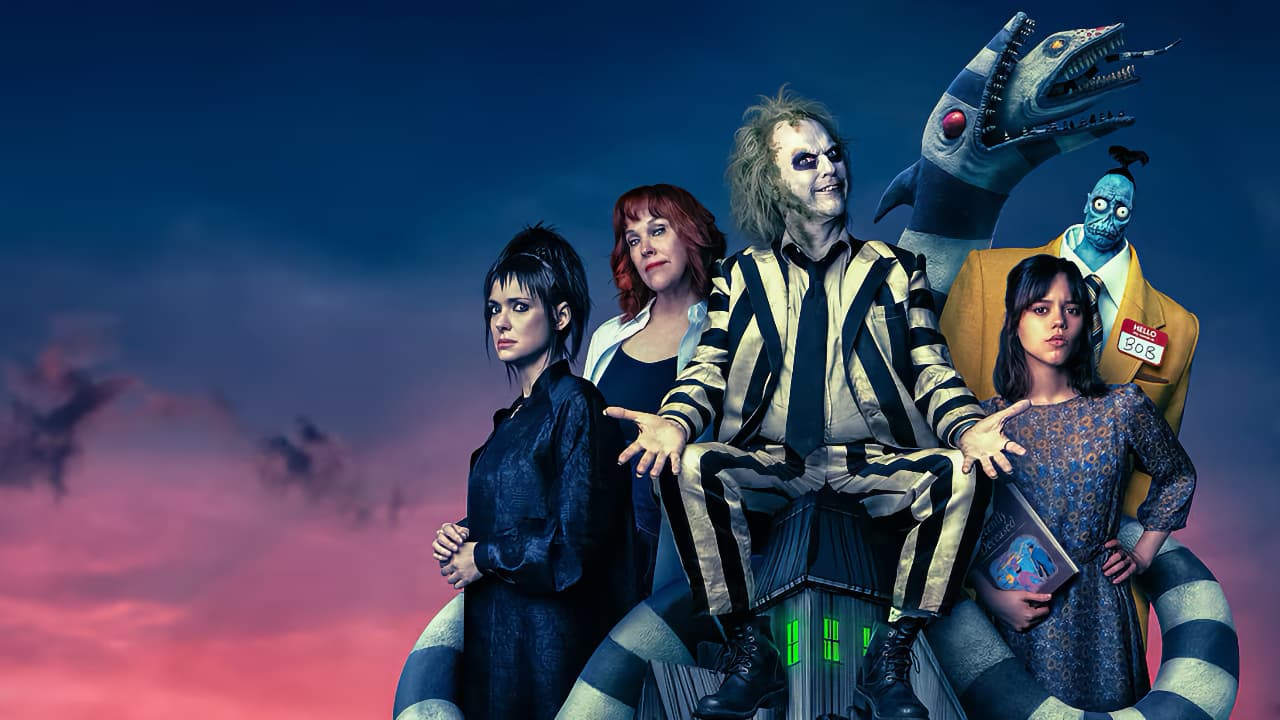
Haris Zambarloukos, BSC, GSC, on how he used the Sony VENICE 2 to help bring Tim Burton's twisted Beetlejuice back to life.
Sony sent us this one in and seeing that we had to wait 36 years for a sequel to the original movie, we thought we'd better make the most of it.
DoP Haris Zambarloukos, BSC, GSC was just 18 when Tim Burton’s iconic gothic comedy-horror original opened in cinemas. It was Burton’s second full-length film and went a long way to establishing his reputation.
Cinematographer Haris Zambarloukos, BSC, GSC has also established his in the years since, especially on a recent sequence working with Kenneth Branagh including Belfast and A Haunting in Venice.
Zambarloukos is no stranger to Sony’s VENICE 2 camera, having appropriately enough used it to shoot A Haunting in Venice. And just as he did for that film, he chose to shoot Beetlejuice Beetlejuice using the camera’s full frame 8.6K 3:2 open gate scan mode with Panavison Ultra Panatars and Ultra Panatar II lenses.
Bear with us here. The Ultra Panatars are older 1.3x anamorphic lenses that use cylindrical elements for focussing, which give a really unique look. Originally designed for film, when used with VENICE 2’s 3:2 mode, the final aspect ratio is 1.85:1.
“Tim has always loved 1.85 over 2.40,” Haris says. “I started using 1.85 again on Belfast and really fell in love with it again, then I used it on Haunting in Venice and it just felt appropriate.”

For Beetlejuice Beetlejuice, Zambarloukos and the camera department performed many tests, experimenting with all kinds of different techniques, some making it into the film, some not.
“You're constantly searching for new ways to create interesting images,” he says. “I was curious to see if in our flashback, where Beetlejuice meets Dolores his wife… …that was all set in this kind of gothic candlelight, what kind of infrared would be emitted by candles and by lighting the scene with only candles and shooting it in black and white infrared.”
VENICE 2 has two different base ISOs – 800 and 3200 – and for Beetlejuice Beetlejuice the ability to shoot at 3200 ISO with no loss of image quality really helped Zambarloukos to bring its strange Afterlife world to the big screen.
“Tim was certainly curious about a very high-speed sensor and the idea that we could shoot at 3200 ASA,” he comments. “He quickly and immediately saw the benefits of something like that, in particular in nuances of colour and candlelight in combination.”
Zambarloukos would make extensive use of shifting and rolling colours from LED lights, often blended with candlelight or ‘witches fingers.’
“You don’t know where it’s coming from, but it looks otherworldly,” he says about Witches Fingers. Supplied by the film’s special effects team, Witches Fingers are a gas-powered torch that provides a large bright flame.
“Oh my god, we were really mixing it up,” he says, “and these sensors are quite receptive to that, and you don’t know quite why, but it just doesn’t look exactly like anything that he [Burton] had seen or worked on to that extent, or in that particular combination.”
In one memorable sequence, he needed to track Astrid (Jenna Ortega) on a bike ride. He considered using Russian arms and other large and complex tracking equipment to track Ortega on her bike, but none of that felt quite right for this film. So he chose to mount the Sony FX3 on a small gimbal attached to her bike, as well as to an electric bike for tracking shots.

Zambarloukos was aware that while on paper the specs of the Sony FX3 were quite a bit lower than that of the Sony VENICE 2, but he felt the FX3 worked perfectly for these particular shots. Because both cameras have a very similar colour space, the differences weren’t objectionable. “The colour space for the two cameras is very much from the same place,” he says, “and I'm very aware that I find that more obtrusive when it’s wrong than anything else, such as than pixel counts, etc.”
Much more at the link. And watch the BTS below.
tl;dr
- Cinematographer Haris Zambarloukos used the Sony VENICE 2 to shoot the movie Beetlejuice Beetlejuice, making use of its full frame 8.6K 3:2 open gate scan mode with Panavison Ultra Panatars and Ultra Panatar II lenses.
- He experimented with various techniques, including shooting in black and white infrared and using shifting and rolling colors from LED lights blended with candlelight to create otherworldly effects.
- The camera's high-speed sensor allowed shooting at 3200 ISO with no loss of image quality, which was particularly useful for capturing nuances of color and candlelight in combination.
- For tracking shots of a bike ride, Zambarloukos used the Sony FX3 mounted on a small gimbal attached to the bike, as well as on an electric bike for tracking shots, as it worked perfectly for those particular shots and matched color.
Tags: Production sony BTS Panavision


Comments